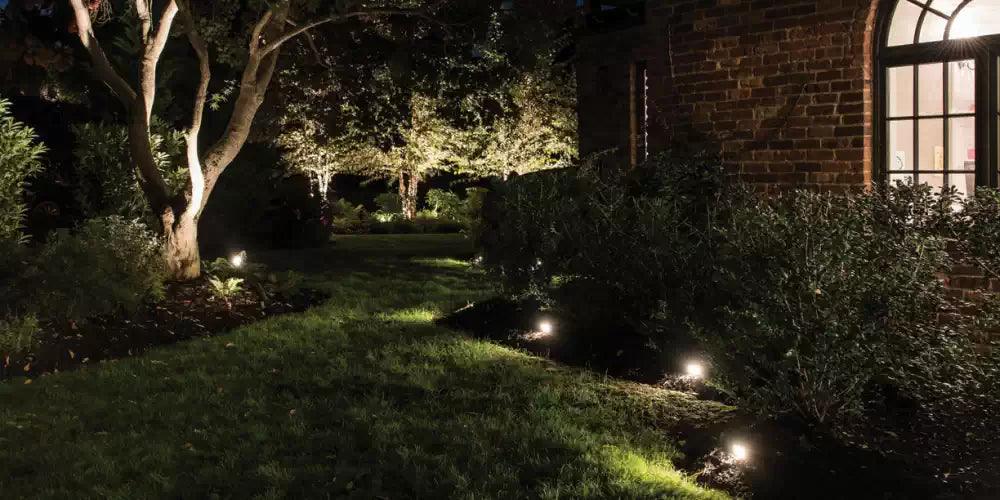Landscape lighting is an integral aspect of outdoor decor that accentuates your property's beauty while providing safety and security. It can transform your property into an inviting, aesthetically pleasing space that stands out even after dusk. This guide will enlighten you about different types of landscape lighting, where to place them, and how to use them effectively for the best results.

Understanding the Importance of Landscape Lighting
Landscape lighting is an excellent way to improve both the aesthetics and functionality of your outdoor space. Not only does it highlight your property's architectural features and prized plantings, but it also ensures safer navigation through your garden, patio, or driveway after sunset.
- Aesthetic Appeal: Landscape lighting can drastically enhance the visual appeal of your property. By strategically placing lights around your yard, you can cast a warm, inviting glow that accentuates your home's architectural features and landscaping.
- Safety and Security: A well-lit outdoor space can deter potential intruders, making your home safer. Moreover, landscape lighting can illuminate pathways, reducing the risk of tripping or falling during the night.
- Increased Property Value: Besides aesthetics and safety, landscape lighting can potentially increase your property value. A beautifully lit exterior can make a strong first impression on potential buyers, adding to your home's curb appeal.
Determining What to Light in Your Yard
Before you dive into choosing the type of lights, it's crucial to identify what features in your yard you want to highlight. Your focus should be on illuminating the most appealing elements of your property, such as:
Architectural Features: Your home's architectural features, such as walls, columns, or unique design elements, can be accentuated beautifully with the right lighting.

Garden and Plantings: Your prized plantings, trees, or an attractive flower bed can be the perfect elements to highlight using landscape lights.

Paths and Walkways: Lighting up paths, walkways, and driveways not only adds to the aesthetics but also ensures safe navigation after dark.

Water Features: If your yard features a pond or a fountain, using landscape lights can add a touch of magic, creating mesmerizing reflections after sunset.

Exploring Types of Landscape Lighting
Understanding the different types of landscape lighting can help you make an informed decision about what will work best for your yard. Here are some of the most common landscape lighting types:
Spotlights and Floodlights
Spotlights and floodlights are excellent for creating a focal point in your yard. While spotlights project a concentrated, narrow beam of light, floodlights illuminate a wider area, making them ideal for lighting up large, prominent features.

Path Lights
Path lights are crucial for lining walkways and driveways, adding to both safety and aesthetics. They cast a soft, diffused light, leading the way and adding a warm, welcoming glow to your property.

Well Lights
Also known as in-ground lights, well lights are placed in the ground and shine upwards. They are perfect for accenting trees, plantings, or architectural features.

Deck and Step Lights
Deck and step lights are installed directly into your deck or stairs. They help improve safety by illuminating these areas, reducing the risk of tripping or stumbling.

Hardscape Lights
Hardscape lights are a newer addition to landscape lighting, thanks to LED technology. They are installed onto or into structures, washing and grazing walls with light.

How to Install Landscape Lighting Systems
Installing landscape lighting is a rewarding DIY project. Here is a simple step-by-step guide to installing landscape lighting systems:
- Lay Out the Components: Start by placing all your lights around your yard. Don't connect them until you're sure of the placement.
- Connect It All: Start by connecting the lights. Then connect everything to the transformer.
- Plug It In: You can fine-tune your lighting placement by checking everything right at dusk. This will give you a sense of how everything will look at night with just enough residual daylight left to work.
- Cover the Cables: A light layer of dirt or other ground cover is enough to hide your cables. Placing them along the edges of hardscaping provides extra protection and makes it easier to locate the cable later, if needed.
How to Choose a Landscape Transformer
Choosing the correct transformer for your low-voltage system is vital. Here's a simple formula:
- Add together the wattage of all the individual lights in your system (example: 5 lights using 20 watts each: 5 x 20 = 100)
- Multiply that total by 1.5 (1.5 x 100 = 150)
- The resulting number is the transformer size, in watts, that you'll need. (150 watts)
The Benefits of LED Landscape Lighting
LED lighting is up to 10x more energy-efficient and 25x longer-lasting than regular incandescent lighting. Here are some reasons why LED is ideal for landscape lighting:
- Cost-Efficient: LED lights consume less energy, allowing you to save on electricity bills.
- Long-Lasting: LED lights have a long lifespan, reducing the hassle of frequent bulb changes.
- More Lights: Because LEDs use so little watts of energy, you can use more of them with any given transformer.
Landscape Lighting Design Ideas
Designing a landscape lighting system requires creativity and an understanding of how light interacts with the outdoor environment. Here are some landscape lighting design ideas for you to consider. For more landscape lighting design techniques, read our blog: An Introduction to Landscape Lighting Design.
Highlighting: Use spotlights to highlight key architectural features of your home or prized plants and trees in your yard.

Silhouetting: This is achieved by placing spotlights or well-lights behind an object or plant, creating a silhouette as it shines towards the path or yard.

Moonlighting: This technique uses spotlights high in trees angled downward to create the effect of moonlights.
Grazing: Take advantage of flat surfaces' texture by using well lights or hardscape lights to graze the surface of different hardscape items.






